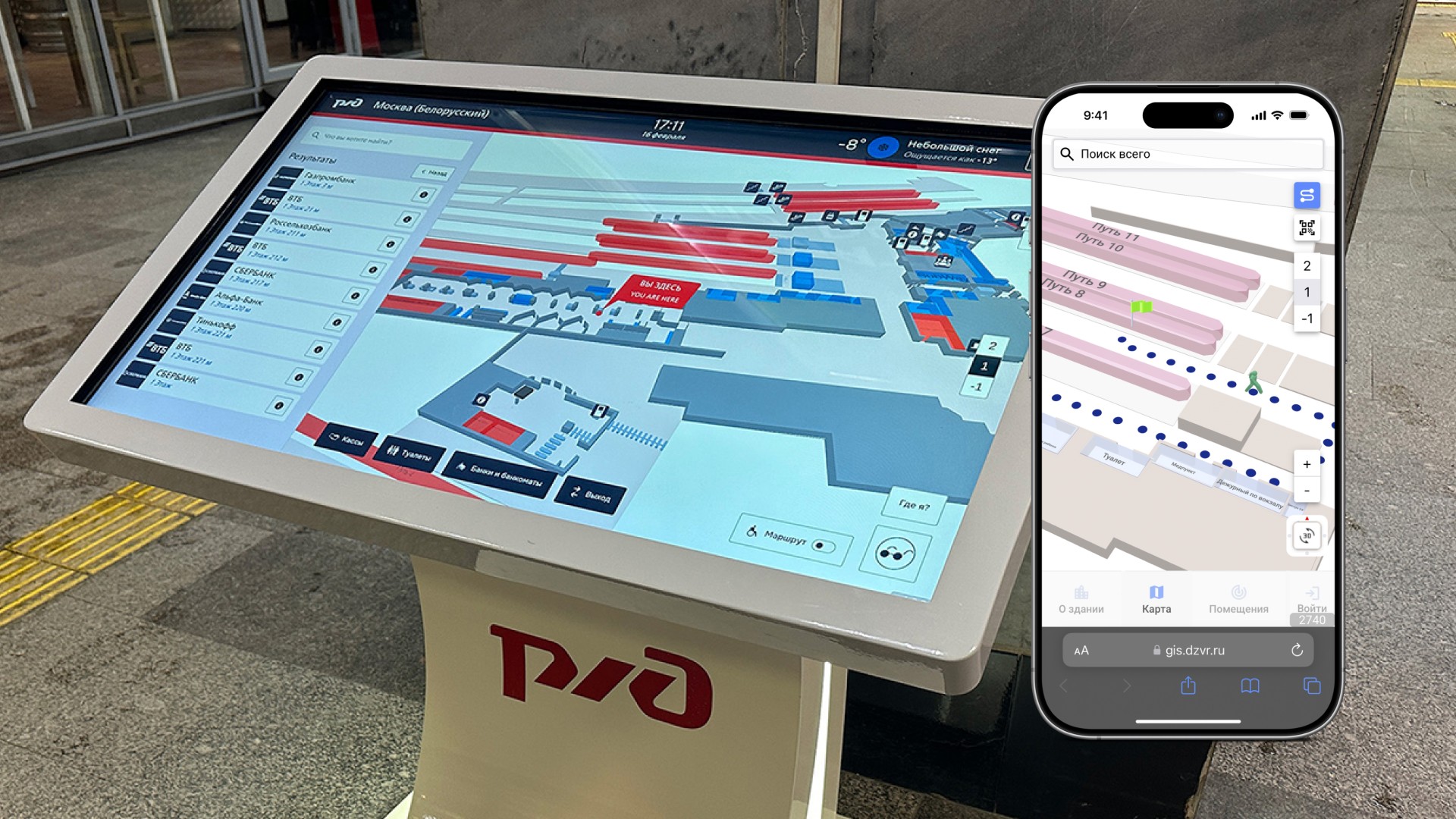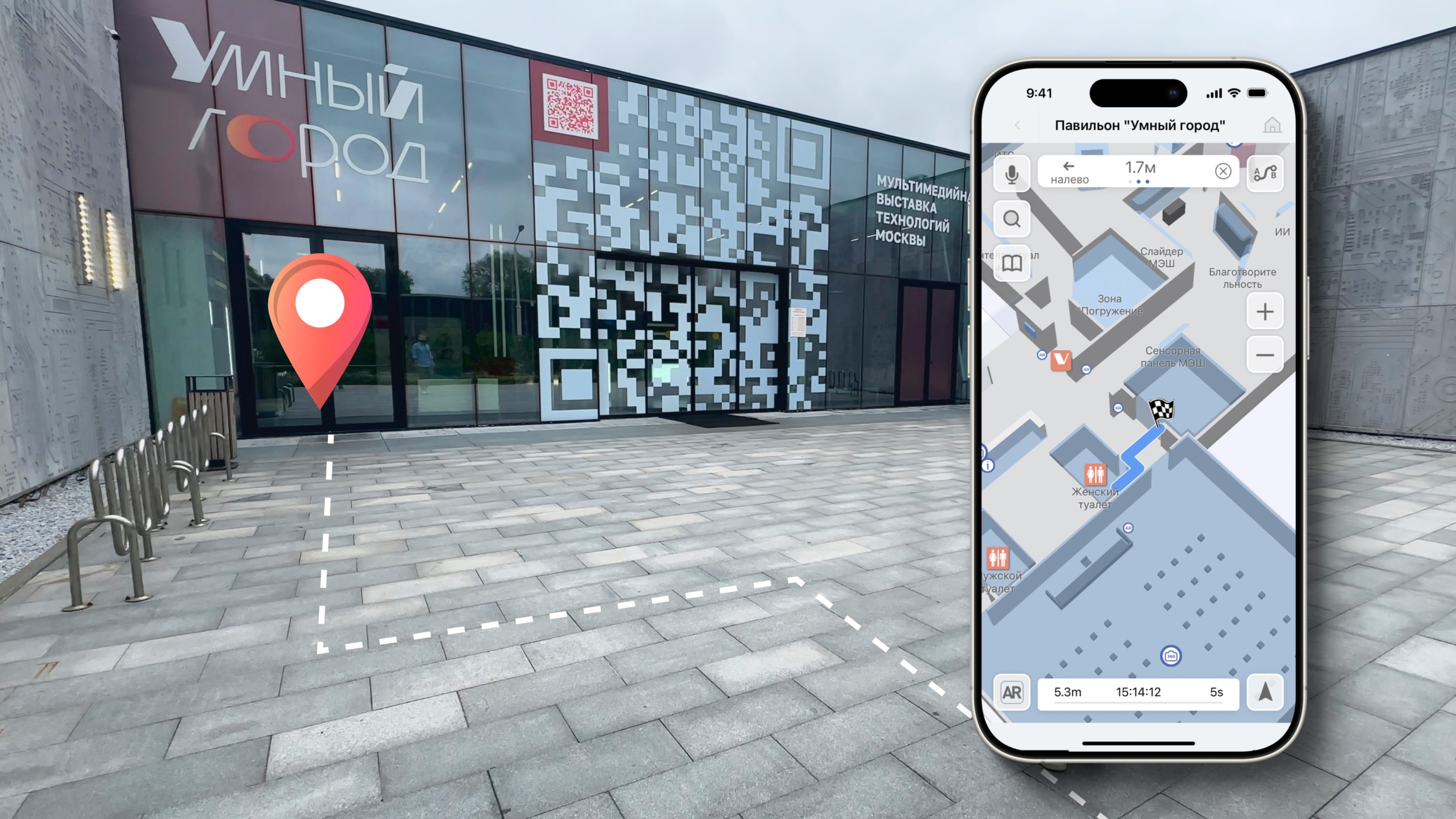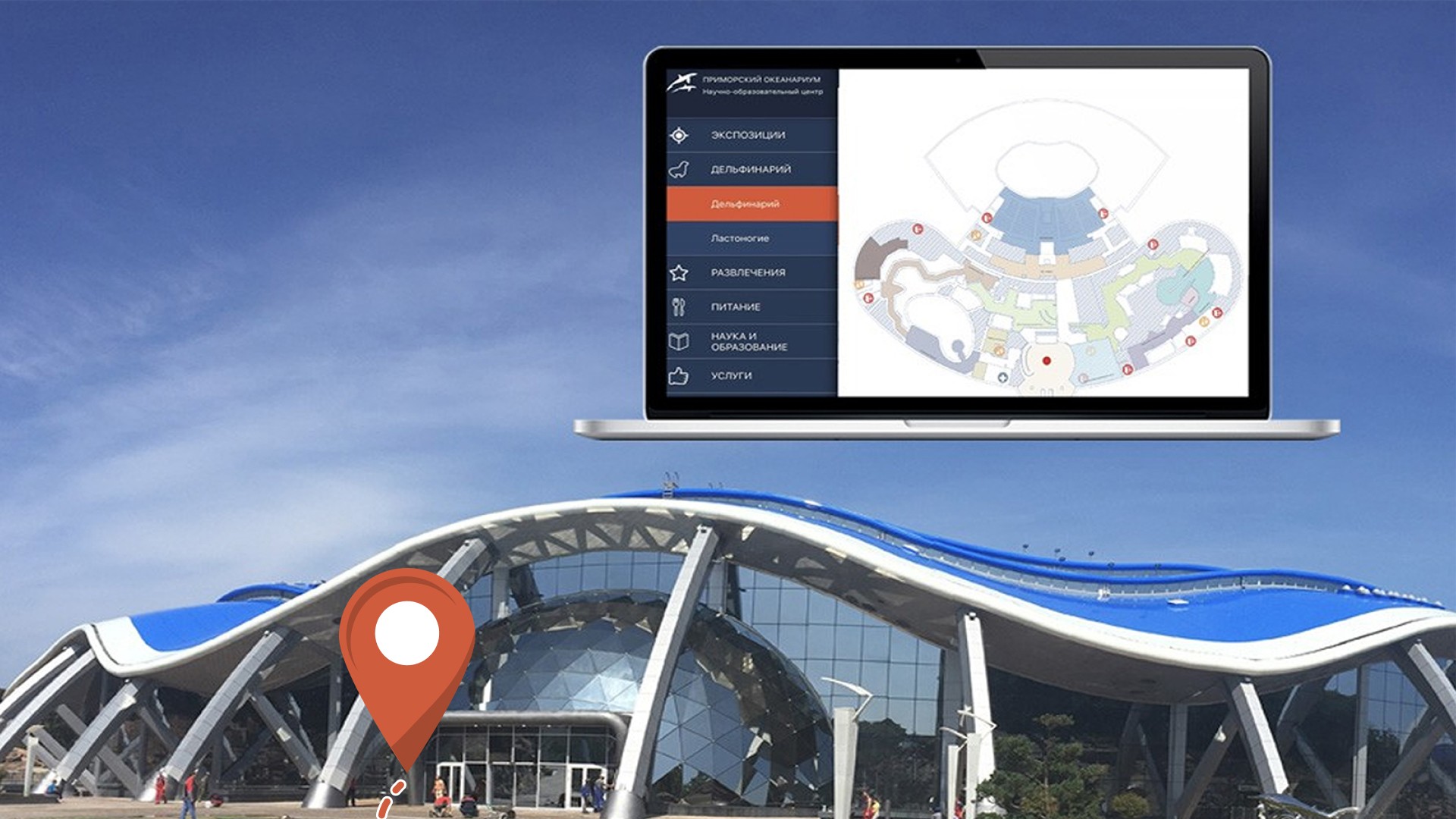2018
Navigation in the stadiums of the 2018 World Cup
Indoors Navigation has implemented an integrated navigation and information system (NIS) at seven stadiums of the FIFA World Cup in Russia
The main goal of the project was to provide convenient tools for fans and stadium administrators to navigate and manage the flow of people, which significantly improved the overall user experience and helped optimize the operation of facilities.


by 40%
Delays in the stands have decreased
by 50%
The number of requests to stewards about finding a seat or exit has decreased.
by 2.5 times
They began to find their
place faster.
Goals and objectives of the project
The FIFA World Cup is one of the largest sporting events in the world, attracting millions of viewers. The scale of this event requires careful organization and creation of a convenient infrastructure for managing the flow of people in stadiums. Indoors Navigation was tasked with developing a system that could not only facilitate orientation for fans, but also provide stadium administrative services with tools to monitor visitor behavior in real time.
A comprehensive solution
The company offered a multi-level system that included a mobile application, interactive touch stands, the deployment of Wi-Fi and Bluetooth networks, as well as the creation of a web portal. This allowed us to create a unique integrated navigation infrastructure.
1. Stadiums mobile application
One of the key elements of the system is a mobile application developed specifically for the World Cup. It supported both iOS and Android and included the following features:
- Stadium navigation: Users could find their seats in the stands, locker rooms, VIP areas, catering areas and other important facilities. The app provided a route to the right place, helping to navigate the arenas of thousands.
- 360-degree video tours: Visitors could take a virtual tour of the stadiums with a panoramic view. This allowed us to assess the infrastructure of the facility before visiting it.
- Audio Guide: The app provided an audio guide for each stadium, revealing key locations such as mixed zones, conference rooms, VIP areas, and even soccer fields.
- Augmented Reality (AR): The app also supported an AR feature that allowed users to explore stadiums through 3D models created with high precision.
- Push notifications: The Administration could send users up-to-date notifications with information about matches, promotional offers and other important events.

2. Interactive information desks
Interactive touch stands were installed in the stadiums for visitors who do not use mobile devices. These racks provided access to navigation information, helped to build routes around the stadium, and also displayed up-to-date news about matches and events in the arena.
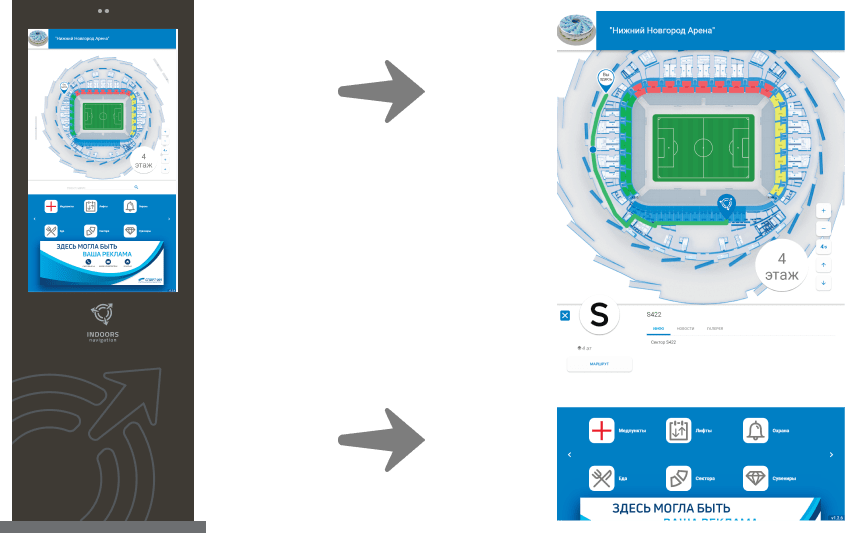
3. Deploying Wi-Fi and Bluetooth networks
- ING 2.1 Wi-Fi gateways: A specially deployed network provided stable positioning and monitoring of user movements.
- Bluetooth beacons: These devices helped in the precise localization of users in stadiums, providing accurate data for building routes.

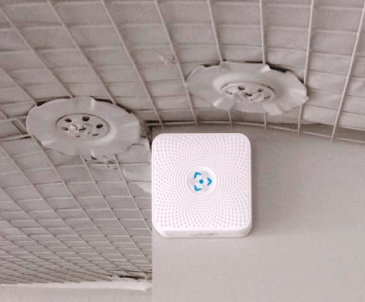
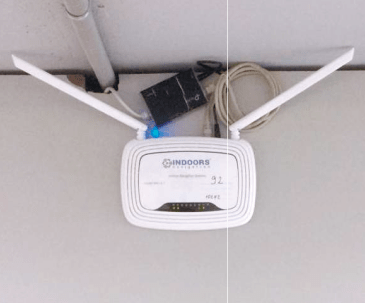
4. Web Portal
In addition to the mobile application, a web portal was created that allowed users to familiarize themselves with the infrastructure of the stadiums in advance. The portal provided virtual 3D models of objects, indoor layouts, and routes. This helped the fans to better prepare for visiting the stadium, having studied all the key areas in advance.
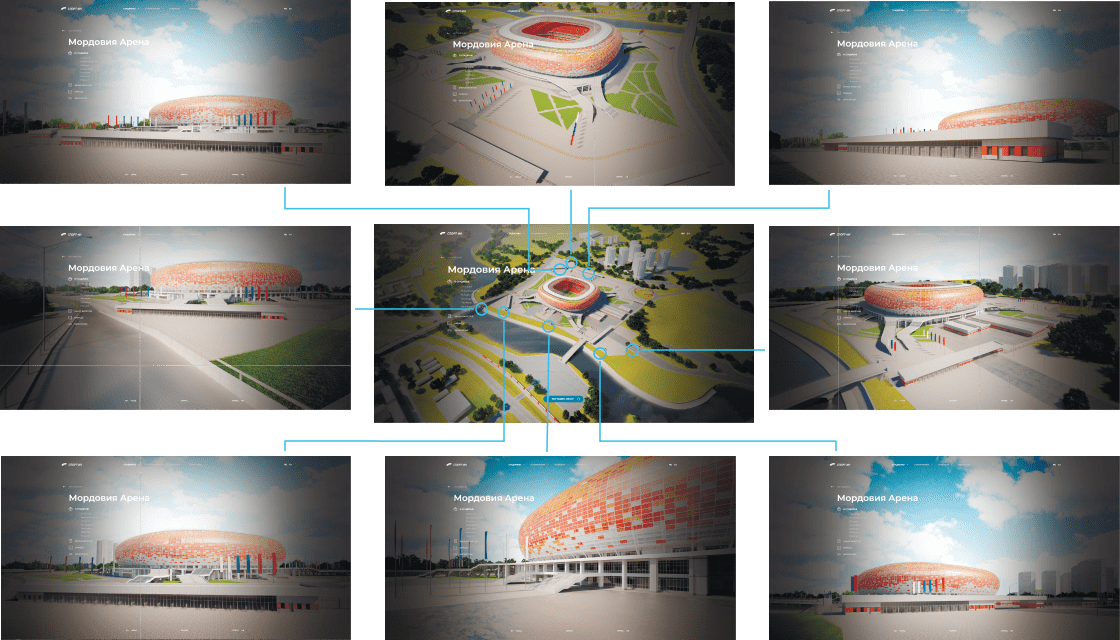
Examples of using the system
- Fan Navigation: The app helped fans easily find their seats in the stands, avoid queues in the catering area, and quickly navigate crowded areas. This significantly reduced the time spent searching for the right objects.
- Marketing and advertising: Interactive stands and push notifications provided additional opportunities for stadium organizers to advertise and promote goods and services. This decision helped to improve interaction with fans and created a new channel to attract customers.
- Monitoring and analytics: One of the key elements of the Indoor Navigation system was the use of heat maps, which allowed the administration to track the movement of visitors to stadiums in real time. This made it possible not only to optimize the flow of people, but also to prevent congestion and queues in critical areas.

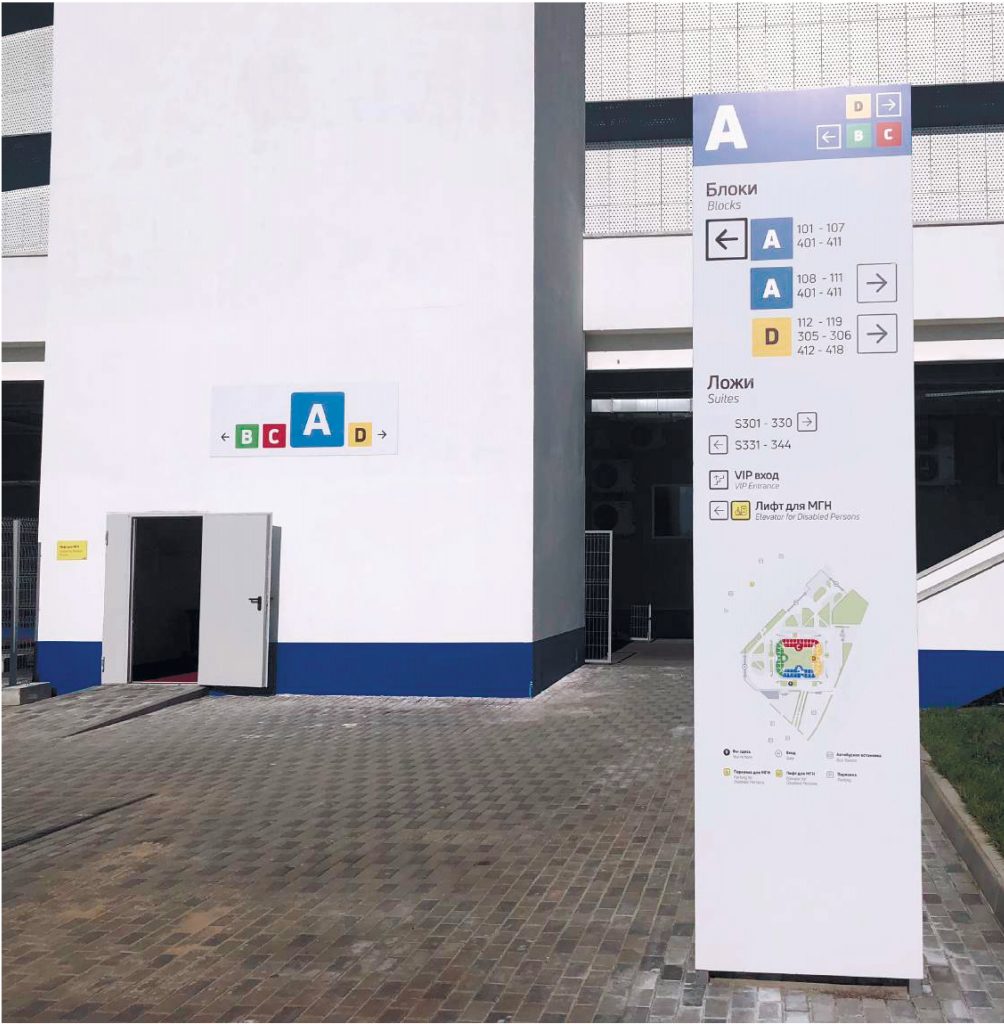
Technical architecture
Indoors Navigation Platform was built on the basis of a reliable infrastructure using modern technologies to ensure stable operation under heavy loads:
- ING 2.1 Wi-Fi gateways and Indoors Navigation Bluetooth beacons provided accurate positioning.
- The sensor racks have been integrated into the overall system, allowing data editing via a centralized web dashboard.
- The mobile app used geolocation data embedded in smartphones, as well as information from Bluetooth beacons to build routes and monitor users.
The system has been designed to withstand heavy loads and operate in large-scale events with thousands of users.
Implementation results
- Improved user experience: Stadium navigation has become intuitive and accessible. Visitors noted the high speed and accuracy of the application, as well as the ability to quickly find the desired objects.
- Improved flow management: The use of heat maps and movement data allowed stadiums to optimize the flow of people, prevent mass gatherings and effectively manage the seating area.
- Increased engagement: The app and interactive stands have become not only navigation tools, but also channels for interacting with fans through advertising campaigns, push notifications, and newsletters.
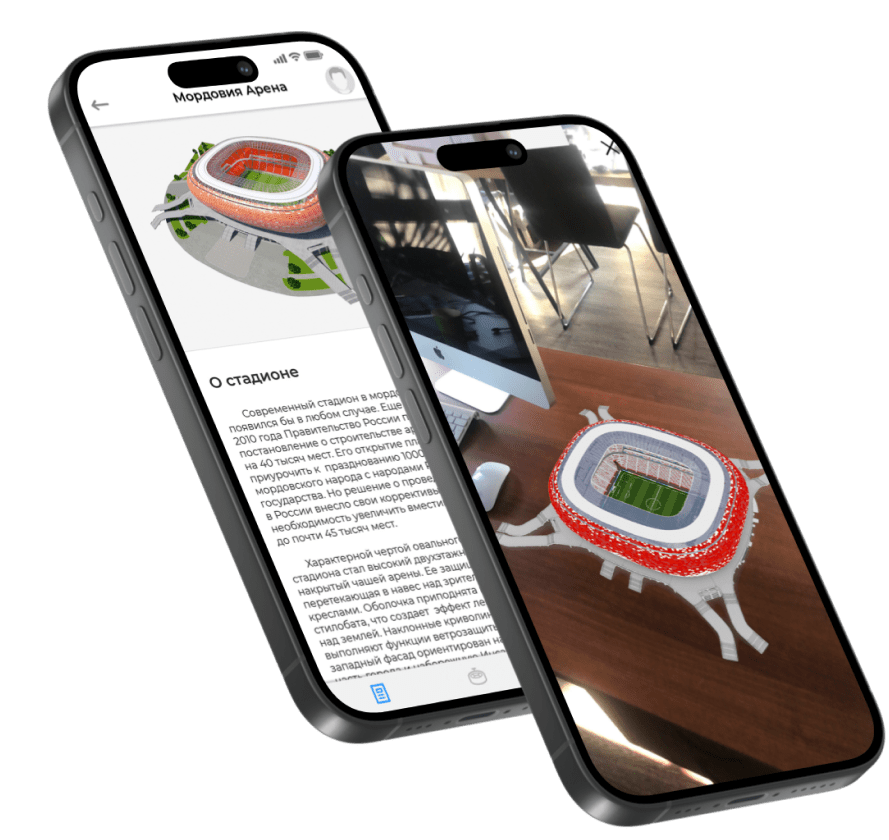
The mobile app
Using the mobile application, you can find your place on the podium, determine the location of cafes, shops, toilets and exits.
The app offers an up-to-date map of the stadium with the ability to plot routes to key facilities. Thanks to the notification functions, you will receive information about the start time of matches, schedule changes and current offers from the tenants of the stadium. The app also supports integration with ticket sales systems and allows users to receive personalized recommendations.
Conclusion
The implementation of the Indoors Navigation Platform at the stadiums of the 2018 FIFA World Cup was a successful project that demonstrated the capabilities of modern navigation technologies. This system has proven to be effective not only in improving the user experience, but also in optimizing stadium operations, creating new marketing opportunities, and improving fan safety.

Stadium navigation
At any sports venue, it is important to quickly bring the spectator from the entrance to his place on the podium. Provide a map of the facility in a familiar and convenient way, where he can quickly find his way to the common areas and retail outlets of the stadium.
Thematic publications on our blog
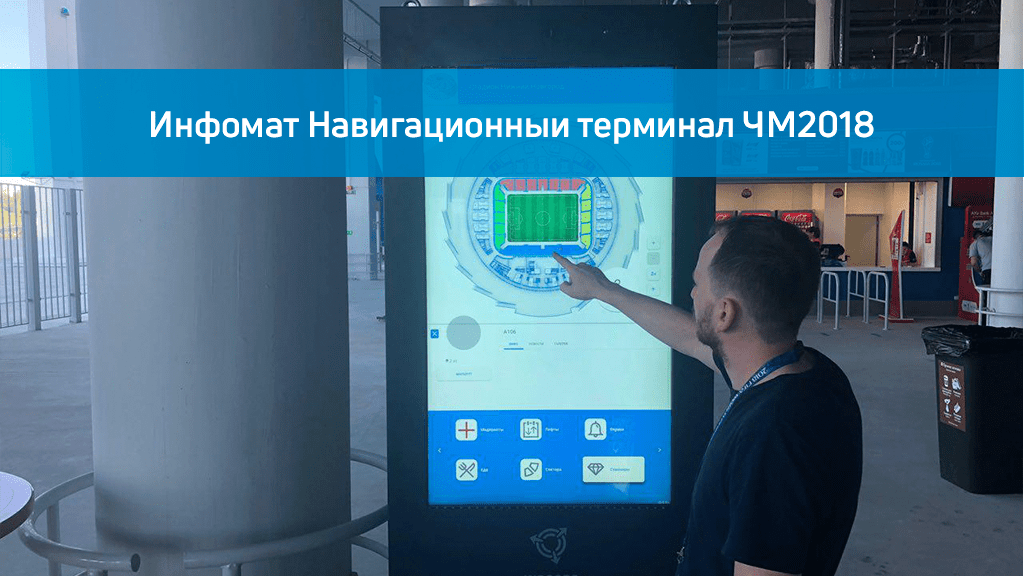
Navigation in the premises of the 2018 World Cup stadium
On the eve of the 2018 FIFA World Cup, we installed a navigation infomat on each floor of football stadiums for indoor navigation, familiarization with the stadium map and its exits. Infomat provides acceleration of viewers' search for their place in the sector and optimizes…

How Bluetooth beacons can change the approach to organizing events
Bluetooth beacons have attracted media attention in the field of technology around the world. With the recent introduction of these low-cost devices by retailers such as Macy's, the Apple Store, and sports fields such as the baseball stadium...
